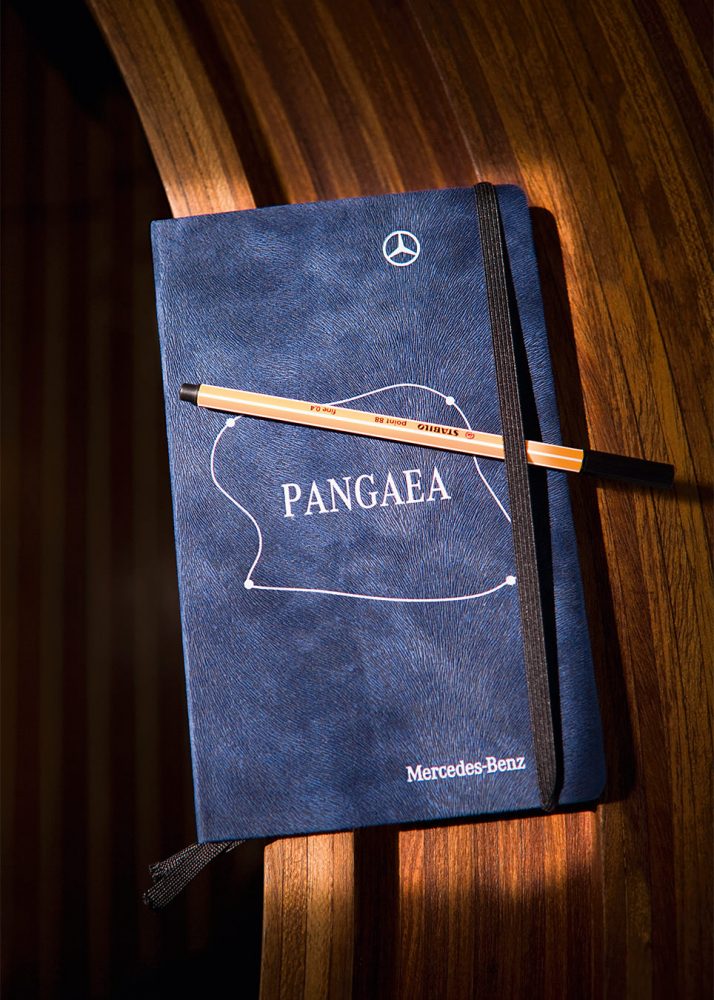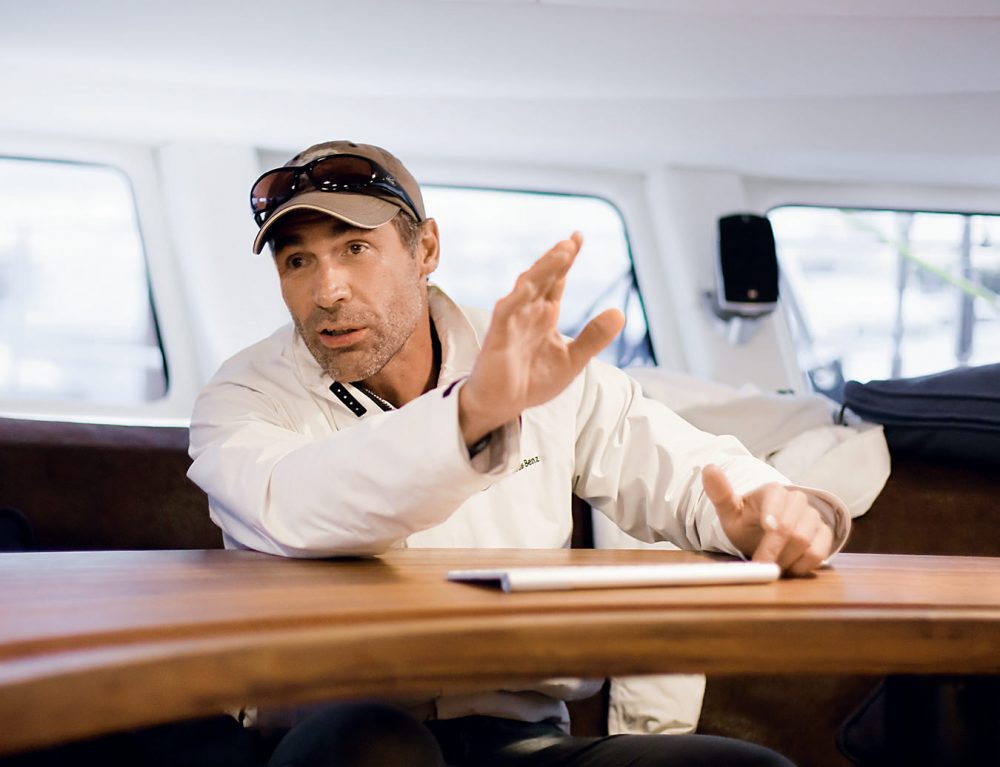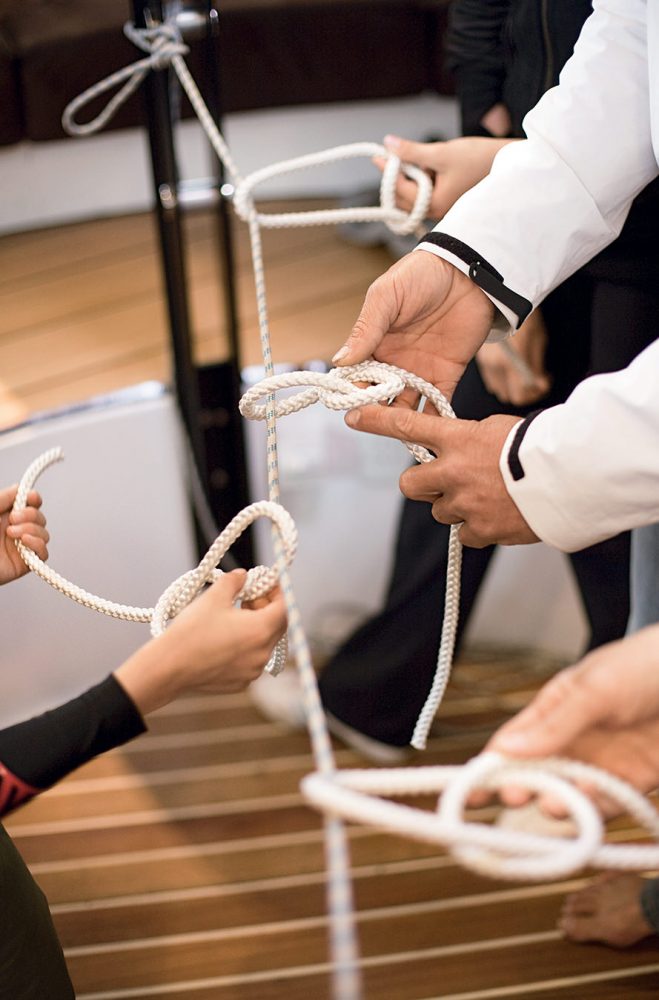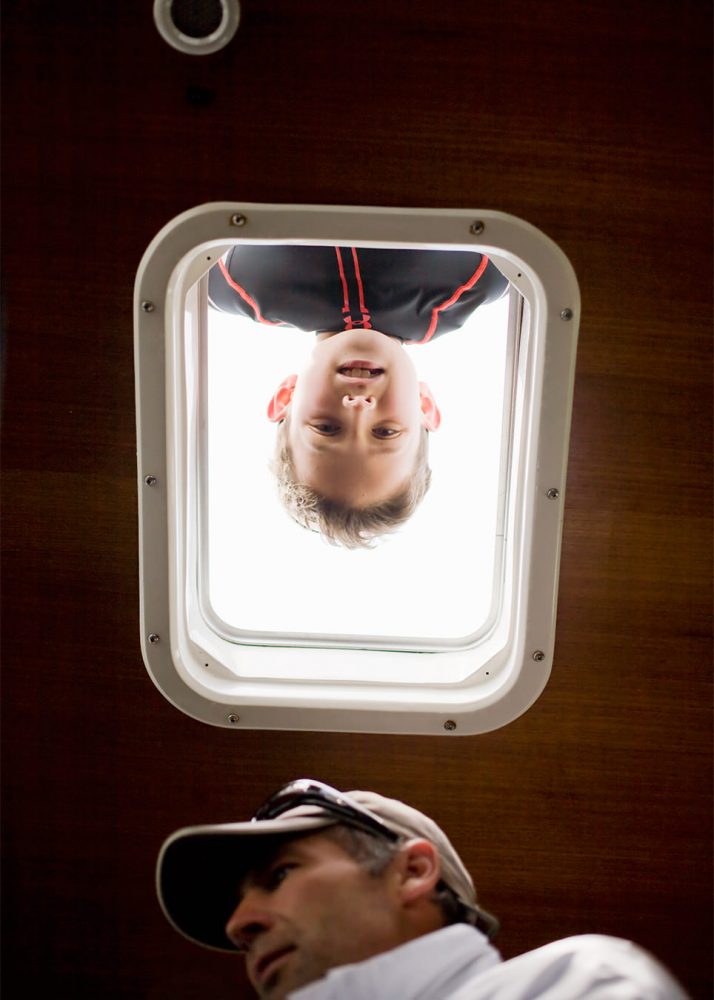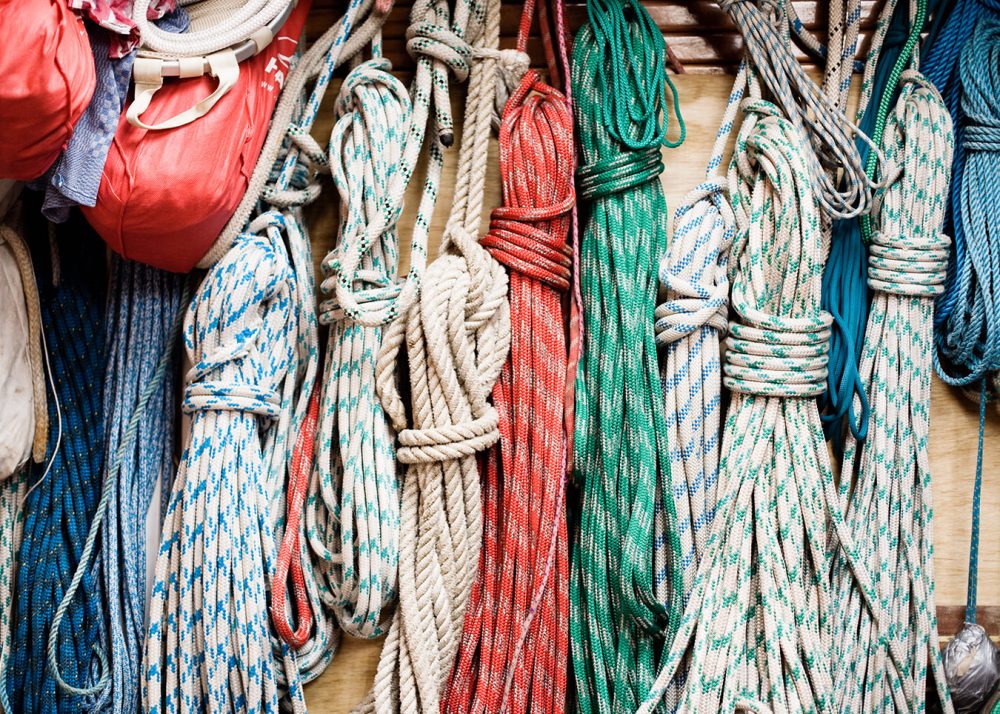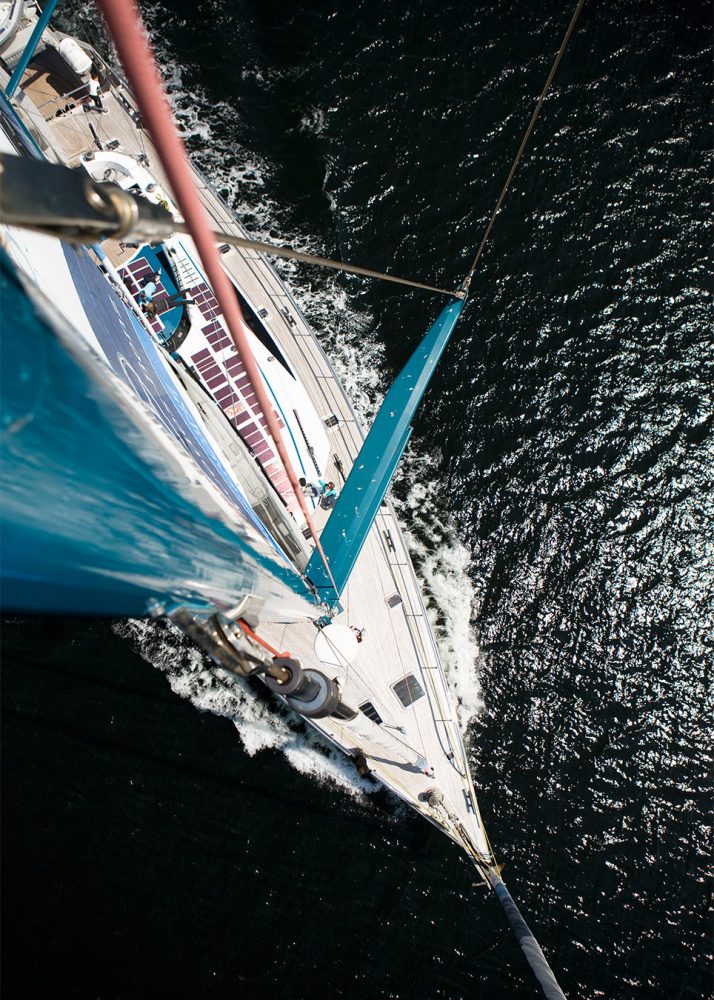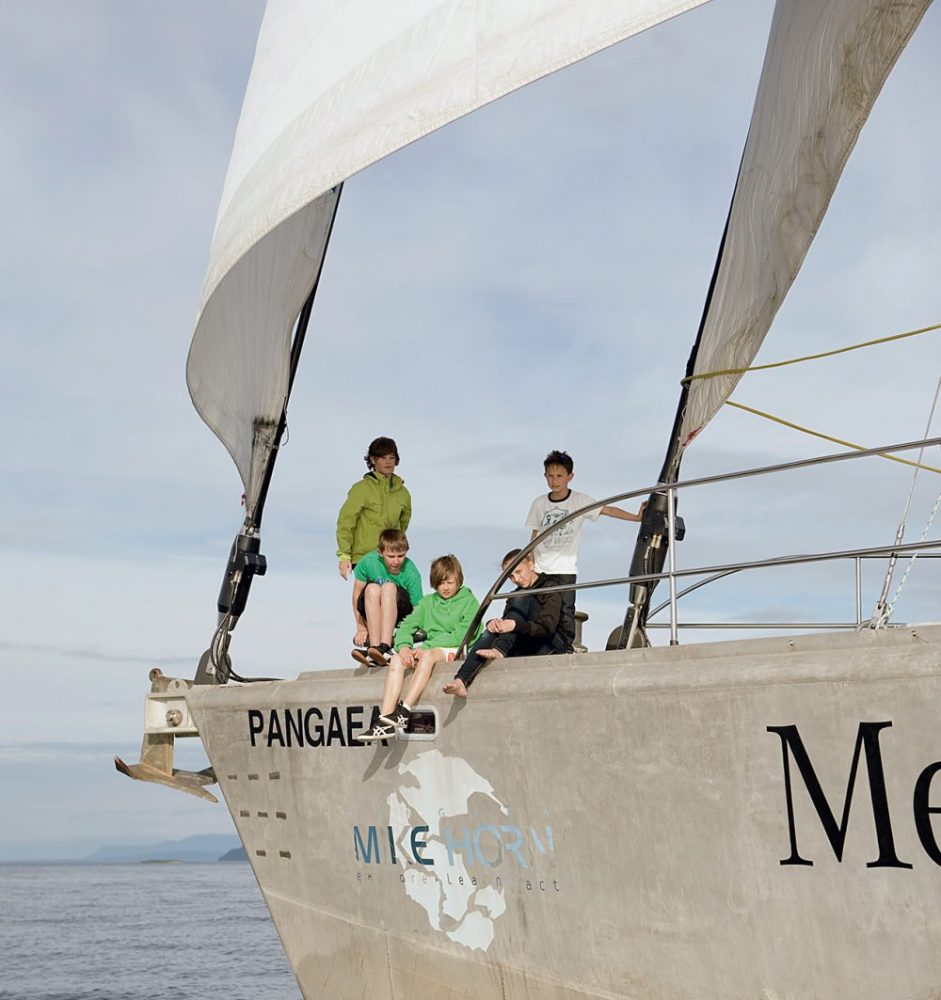Hidden Peak, ATOP Gasherbrum I in the Pakistani portion of the Himalayas, sits 8,068 metres above sea level. The atmosphere—that precious, gaseous layer that sustains life on Earth—becomes too thin for human survival at 7,000 metres. So, a climber wishing to reach Hidden Peak without supplemental oxygen has approximately six hours, depending on his or her ability, to ascend the final 1,068 metres and make their return. In 2007, South African explorer Mike Horn and three of his contemporaries not only accomplished this feat, they completed the entire expedition from base camp to peak and back in under 24 hours and then continued on to reach the summit of Gasherbrum II (8,035 metres). These were Horn’s first 8,000-metre altitude climbs, and in those six hours at each peak, he realized just how quickly the atmosphere can disappear. A metaphor for his concerns about the changes he’s seen to our planet over his storied 25-year career as a modern day explorer, it became the impetus for his next journey. Horn would dedicate the next four years to circling the globe by sailboat, implementing environmental stewardship initiatives on each continent with the help of youth aged 15 to 20 from around the world. The expedition would be called “Pangaea”—one Earth.
When his 35-metre custom-built exploration vessel glides into Vancouver’s Coal Harbour on a gorgeous summer afternoon in 2011, onlookers cannot help but take notice. Its four towering sails herald its arrival; its aluminium hull, weathered and worn, indicates the far corners of the globe it has reached. It has just returned from the North Magnetic Pole, where a group of so-called Young Explorers have trekked the northern territories of Canada, learning about water salinity, climate adaptation, ice and conservation of the Pole. They collected and studied snow samples for the University of Munich and, along the way, picked up a command for exploration concepts such as terrain, elevation, temperature, wind speed and direction. This was the eighth in 12 Young Explorer expeditions that the ship will embark on before the program concludes in September 2012. In previous expeditions, the Young Explorers recorded data from the coral reefs of Borneo, reconstructed those reefs, cleaned up beaches and studied local orangutan populations. In Fiordland, New Zealand, they worked in conjunction with the country’s Department of Conservation to replace predator traps that would help cull an invasive population of stoats that pose a threat to endangered local species. Each task challenges the young adults in its own way.
As the boat glides nearer to the dock, six youngsters aged 10 to 13 eagerly await its arrival. Coming from Germany, Switzerland and Canada, they will be the first group of Junior Explorers—the youngest group of adventurers to join Pangaea yet. Sailing for three days from Vancouver to Sydney and around the Gulf Islands, it’s a rudimentary introduction to exploration and the environment, which Horn hopes might spawn future Young Explorers.
As the skipper descends to greet his new crew, his personal story and purpose begin to unfold. Mike Horn grew up during the South African Border War of the late 1960s though 1980s, where, as a young man, he served as a commando and specialized in guerrilla warfare. By the time he was discharged from service, the decorated soldier had decided it was time to leave his country. He moved to Switzerland in the winter of 1990, and within three weeks of skiing for the first time, Horn became a ski instructor. By spring he had learnt to paraglide and began instructing that too. His aptitude and athleticism led from one extreme sport to the next, mastering incomprehensible feats like downhill freeride mountain biking (meaning steep pitch, all-terrain scenarios) and descending waterfalls and glaciers by hydrospeed (also known as riverboarding).
Implementing environmental stewardship initiatives on each continent with the help of youth aged 15 to 20 from around the world, the expedition would be called “Pangaea”—one Earth.
By 1995, now married and with two daughters in toddlerhood, Horn took on his most ambitious task yet, to become the first man to hydrospeed the Colca Canyon in Peru, the deepest canyon in the world. The accomplishments only escalated from there. In 1997, it was a six-month solo expedition, where he swam 7,000 kilometres along the Amazon from the source of the river at Nevado Mismi in Peru, across the continent of South America to the Atlantic Ocean. Then, from 1999 to 2000, Horn spent 16 months circumnavigating the equator alone, employing little more than his own brute strength. That is, he travelled by foot, hydrospeed, bicycle and sailboat only. They say that latitude zero is among the most inhospitable parts of the world, and Horn found this to be true in more ways than one. Besides acclimatizing, he dodged bullets aimed at his boat by pirates as he sailed through the waters around Indonesia, he persuaded drug lords to allow him to pass through Columbia, and he narrowly escaped an execution squad after being imprisoned by rebels in the Congo.
Horn’s face, striking and rugged like his boat, bears the signs of having experienced the world—both the beauty and the despair. Yet cutting through the intensity is a kindness in his eyes that bespeaks his passion for his cause. If there is anything that Horn has gleaned from these experiences, it’s as he says: “The planet will survive—it will continue to exist—but we will not. Man can exist in any condition, so why do we need to destroy the planet in order to live? We can live off the planet in a completely natural, human way.”
Perhaps, in a sense, the best compliment you can pay Horn is to say he is only human. No matter what feat he has accomplished, he has done so without reliance on artificial assistance and with the utmost respect for Mother Nature. A perfect example was in his preparation for Arktos, a two year and three month journey during which he traversed the circumference of the Arctic Circle without motorized power. Prior to the expedition, Horn spent time in Northern Canada, learning from one of the few remaining Inuit elders that can navigate by reading ice crystal formations in the snow. “In months of complete darkness, all you have is your headlamp and that which is immediately in front of you,” Horn says.
Over the years, many critics have called him crazy, but, in fact, Horn is meticulously calculated in everything he does. During Arktos, for example, Horn lugged 200 kilograms of food and supplies behind him in a sleigh at all times. He was expending up to 12,000 calories daily and needed to spend five hours a day melting ice, preparing food and eating. He calls these calculations “risk management”. After all, life is the most important thing to him. “Why do I survive?” he says. “So that I can return to my wife and daughters in Switzerland. I must survive. And I am only successful as an explorer if I continue to live, so I realize eventually I will have to stop exploring.” And that is another bit of math Horn has done. Currently 45 years old, one expedition he might still like to complete is to circumnavigate Antarctica solo. He figures that journey would take about three years but that an explorer’s physical ability tends to wane at age 50. If he factors in the Pangaea Expedition, which lasts another nine months, and the time needed for training, he is left with a margin perhaps too narrow to flirt with. “I must survive if I wish to continue passing my knowledge of the world to the younger generation,” he concludes.
The challenge for Horn, however, is in designing expeditions that are reasonably accessible to young people who don’t have the experience he has. How does he find the words to communicate the things he intuitively knows? At the end of the day, it is through the experience of having succeeded, or in having made a grave mistake, that the Young Explorers, too, will learn it intuitively. On the recent North Magnetic Pole expedition, Horn made it clear to the Young Explorers to never, at any point, remove their sunglasses—too much UV radiation would be reflected against the snow. When one Young Explorer removed her sunglasses to wipe her eye, she became temporarily snow blind. It would take three days for her eyes to heal, but if the whole team stopped, the Young Explorers might risk not accomplishing their expedition task. Alternatively, one person could stay back with her until help arrived, forfeiting their own journey.
The latter was a decision only the Young Explorers could make, and a situation that rang too familiar to Horn. During his six-month preparation for Arktos, his shoelace wasn’t tied properly. If he didn’t fix it, snow would enter his boot and his feet would be frostbitten. If he removed his glove to tie the lace, so would his hands. “People told me a hundred times, ‘Mike, don’t take off your gloves,’ ” he remembers. Ultimately he decided he would rather lose his hands than his feet, and in the end, he lost the tips of three fingers. “I learned that the hard way,” he says. “That’s a simple example, but I didn’t make that same mistake again.”
“The planet will survive—it will continue to exist—but we will not. Man can exist in any condition, so why do we need to destroy the planet in order to live?”
Already, the ship has traversed the Georgia Straight, and riveted by Horn’s stories and those of the Young Explorers, the juniors on board are eager to pitch in. In fact, it is expected that they take ownership of the boat. Horn widens his stance, and asks forcefully, “Who is going to unzip the sail?” He claps his hands loudly, and shouts, “Let’s go!”
Noah, 10 years old from Vancouver, literally jumps at the opportunity, sliding over the low-slung, solar-paneled roof of the boat’s navigation station to get there. Horn instructs him to climb up, but is met with a blank stare. “From where?” Noah asks.
“From wherever you think it’s best,” Horn replies, and up Noah goes. It’s a microcosmic example of how these young kids are being encouraged to tap into the potential they may or may not know they already have.
Two days later, Horn takes the Junior Explorers to a forest atop a cliff on a small Gulf Island to teach them how to walk in a straight line in the brush. The seemingly simple task becomes a great life lesson. Horn explains that if you are right-handed, you will always be inclined to overcome an obstacle on the ground by stepping over it with your left foot. And without knowing it, you will end up walking in a circle, always veering in one direction. But, if you are aware of that, you can also correct for it. “Sometimes the easiest way is not always the most effective way,” he says.
It’s time to return to the boat, and Horn indicates to the kids to descend via the cliff, not the path they took on the way up. “That’s impossible,” 13-year-old Lucien of Garaberg, Germany, exclaims. “There are no ropes!”
Horn gives instead an infamous, “Let’s go!”
The children receive a pointer: if you need to descend a cliff, always face your body toward the wall, and then focus on each individual step. Sure enough, they all get down. “You must always think about the big picture,” Horn says. “And while you may have a palette with all the colours to paint that picture, you can only start with one stroke of the brush.”
Back aboard Pangaea, Horn waxes philosophical. “Anybody can do it. They just don’t necessarily know the recipe. I can give them the recipe, but they must bake the cake. This is not about saving the world. It’s simply about changing the way we live—the way we coexist with the planet.”
Corporate sponsorship, like that of Mercedes-Benz, gives Horn the tools he needs to communicate this message. On a primary level, the state-of-the-art, eco-friendly and sustainable technologies the Pangaea is equipped with—Mercedes-Benz BlueTec engines, solar-panel powered energy, a recyclable aluminum hull—reflect the mission statement of the expedition. But more importantly, the vessel itself, in its ability to unify people and places, communicates Horn’s message through action. “Nature has a way of telling us, ‘Listen guys, be careful. I cannot sustain myself.’ ” Horn says. “That’s why I need young people with me aboard Pangaea. You see, responsibility is only a burden if you don’t want to do it. The next generation—if they are exposed to these remote and fragile environments—they will want to sustain them.”
As the Pangaea begins its return toward Vancouver, the six children stand at its bow, watching as it threads the needle that is Porlier Pass between Gabriola and Valdes islands. The sun is glimmering off the water, and without any prompt, Horn turns and says, “Look at this place you live in. It’s beautiful. This has to be in my top five, certainly. How is it not protected as a World Heritage Site?”
The beauty of the region, with its coastal fjords and breaching killer whales, did not lose its effect on the children either. Two weeks later, young Noah gives a presentation to an audience of 400 at his school’s year-end assembly. Proudly walking them through a slideshow of photos from his journey, the power of his words belie his age. “This expedition has changed me,” he says. “As the youngest ever to travel with Mike Horn, away from my family and home, I now have the urge to go outdoors and push myself beyond my limits. Also, I want to help our planet. One day, I hope to travel the world with Mike Horn and inspire kids like he did for me.” Mission accomplished.





